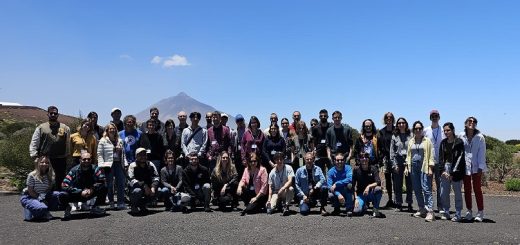Study on atmospheric nanoparticles
Study on atmospheric nanoparticles
The journal Atmospheric Chemistry and Physics (ACP) publishes a study on atmospheric nanoparticles performed at Izaña Observatory. The investigation shows how thousands of nanoparticles are formed almost every day above the stratocumulus layer (typical of the subtropical troposphere), even if the air is extremely clean in this region. This phenomenon is caused as a consequence of pollutants emissions in low levels of the troposphere (sulfur dioxide emissions in industrial activities, in ships and vehicle exhaust) and a subsequence transport to upper atmospheric layers. Initially, these particles are smaller than 10 nm (“just born” particles). However, they may grow up to reach 100 nm size in a few hours / days. These aerosols may act as cloud condensation nuclei (resulting in cloud formation) and also influence on the transfer of radiation through atmosphere. Because the large uncertainties on the processes involved in nucleation and subsequent particle growth, studies on nanoparticles are of high priority, according to the IPCC (2007) report.
The paper can be download at:
http://www.atmos-chem-phys.net/9/6319/2009/
http://www.atmos-chem-phys.net/9/6319/2009/acp-9-6319-2009.pdf







